Conservatoire national des arts et métiers
The Conservatoire national des arts et métiers (French: [kɔ̃sɛʁvatwaʁ nɑsjɔnal dez‿aʁ e metje]; abbr. CNAM | English: French National Conservatory of Arts and Crafts) is a French public higher education institution, national research centre and grand établissement as well as grande école of engineering, thus part of the French elite universities league. Headquartered in Paris, it has campuses in every major French cities, in overseas France and in every francophone African countries,[4] China,[5][6] Haiti,[7] Germany,[8] and Switzerland.[9][10][11] Founded in 1794 by the French bishop Henri Grégoire, CNAM's core mission is dedicated to provide education and conduct research for the promotion of science and industry. With 70,000 students and a budget of €174 million,[12] it is the second largest university by enrolment in Europe for distance learning and continued education, after the University of Hagen.[13] CNAM provides certificates, diplomas, Bachelor's degrees, Master's degrees and PhD's in Science, Engineering, Law, Management (AMBA-accredited[14]), Finance, Accountancy, Urban Planning and Humanities, all designed to abide by the European Bologna process, and thus complying with the European Credit Transfer System. It is the only higher education institution in Europe to provide Physics, Chemistry and Life-Science engineer's degrees up to a PhD-level via distance learning and via its so-called "hybrid learning" which includes intermittent laboratories classes on-site. The CNAM hosts also a museum dedicated to scientific and industrial inventions: Musée des Arts et Métiers (English: the Industrial Design Museum) which welcomed 250,000 visitors in 2018,[15] and is located on the Parisian campus of the French National Conservatory of Arts and Crafts at 292 rue Saint Martin, in the 3rd arrondissement of Paris, in the historical area of the city named Le Marais.
Conservatoire National des Arts et Métiers | |
 | |
| Motto | Docet omnes ubique (Latin) |
|---|---|
Motto in English | Teaching to everyone everywhere |
| Type | Public, Grand établissement, Grande école |
| Established | 1794 |
| Accreditation | AMBA |
| Budget | 174 M€ in 2020 |
| Chancellor | Olivier Faron (since 2013)[1] |
| President | Gérard Mestrallet[1] |
| Vice-Chancellor | Bernard Racimora[1] |
Academic staff | 1,670: 568 Professors-Researchers | 1,102 academic staff |
| Students | 70,000 (57,7% employees, 24% job seekers, 12% students, 6,3% self-employed) | 10% of foreign students |
| Postgraduates | 1,592 (Grande Ecole engineers enrollment) |
| 91 (enrolled at the EiCNAM Grande Ecole engineering School) | 340 in total | |
| Location | Headquartered in Paris , France; campuses in Paris (36% of students), in 160 other French cities, in overseas France (3% of students), campuses in whole francophone Africa and in other countries (11% of students)[2][3] |
| Campus | Urban |
| Language | French, English |
| Affiliations | CGE, Hautes Écoles Sorbonne Arts et Métiers University, Elles Bougent |
| Website | www.cnam.fr |
History
Founded on the 10th October 1794, during the French Revolution,[16] it was then proposed by Abbé Henri Grégoire as a "depository for machines, models, tools, drawings, descriptions and books in all the areas of the arts and trades".[17] The deserted Saint-Martin-des-Champs Priory (and particularly its Gothic refectory by Pierre de Montereau) was selected as the site of collection, which officially opened in 1802.
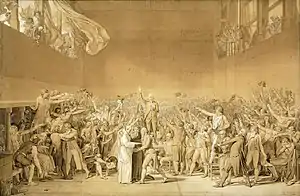
Originally charged with the collection of inventions, it has since become an educational institution. At the present time, it is known primarily as a continuing education school for adults seeking engineering (multidisciplinary scientific program) and business degrees, proposing evening classes in a variety of topics.
The collection of inventions is now operated by the Musée des Arts et Métiers. The original Foucault pendulum was exhibited as part of the collection, but was moved to the Panthéon in 1995 during museum renovation. It was later reinstalled in the Musée des Arts et Métiers. On 6 April 2010,[18] the cable suspending the original pendulum bob snapped causing irreparable damage to the pendulum and to the marble flooring of the museum.[19]
The novel Foucault's Pendulum by Umberto Eco deals greatly with this establishment, as the Foucault pendulum hung in the museum plays a great role in the storyline. The novel was published in 1989 prior to the pendulum being moved back to the Panthéon during museum reconstruction.[20]
On the 25th November 1819, at the instigation of Duke Decazes, newly nominated as Minister of the Interior, a three-Chairs higher education is established at the French National Conservatory of Arts and Crafts: Applied Mechanical Engineering vested in Baron Charles Dupin; Applied Chemistry entrusted to Nicolas Clément; and Industrial Economics left with Jean Baptiste Say.
Missions and Values
The French National Conservatory of Arts and Crafts is infused with the values of the Lumières, as part of the French enlightenment era, of the 18th Century French Humanism, and of the French encyclopedists, whose goal was to provide emancipation via knowledge for everyone; the latter being often followed by most Grande Ecole and Universities in France, along with Universalism and Cartesianism. This background paved the way to nowadays CNAM's values of meritocracy, solidarity and academic excellence.[21]
Under the supervision of the Ministry of Higher Education and as French public institution of higher education, it is assigned three missions:
- Training throughout life (Lifelong learning);
- Technological research and innovation;
- Dissemination of scientific and technical culture.
These missions and values are reflected in CNAM's motto: "Omnes docet ubique", which means: "Teaching to everyone everywhere."
Campuses
Parisian campus
Out of the 70,000 students enrolled at CNAM (57,7% employees, 24% job seekers, 12% students, 6,3% self-employed), 36% are enrolled at the Parisian campus, 3% in Overseas France, 11% abroad and the rest in metropolitan France, of which 1,592 are enrolled at the Grande Ecole engineer school of CNAM: the EiCNAM.[22][23] The Parisian campus and headquarters of the French National Conservatory of Arts and Crafts is located in one of the last medieval architectural area of Paris, in the historical district of Le Marais in the 3rd arrondissement of Paris, at the former Benedictine priory of Saint-Martin-des-Champs, which church and core architectural style was inspired by the Basilica of Saint-Denis architecture built a few years earlier.
This large Cluniac monastery founded by King Henry the First of France in 1059-1060 on Merovingian vestige, is still visible today. The former gothic-style refectory hall dated from the 13th century remains until today and was reassigned as the library in the middle of the 19th century by the CNAM's architect: Léon Vaudoyer.
 Main entrance of the Parisian Campus of the CNAM, on Rue Saint Martin - picture taken from Square Emile Chautemps.
Main entrance of the Parisian Campus of the CNAM, on Rue Saint Martin - picture taken from Square Emile Chautemps.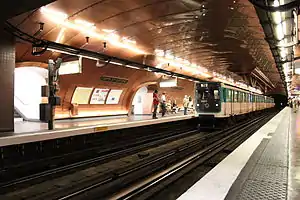 Parisian underground station of Arts & Métiers, founded in 1904, which is served by Line 3 and Line 11. For its renovation in 1988, the Ouï-dire style was applied to Line 3, whilst on Line 11, for bicentenary anniversary of CNAM in 1994, the platforms were redesigned by Belgian comics cartoonist François Schuiten in a steampunk style reminiscent of the science fiction works of Jules Verne.[24]
Parisian underground station of Arts & Métiers, founded in 1904, which is served by Line 3 and Line 11. For its renovation in 1988, the Ouï-dire style was applied to Line 3, whilst on Line 11, for bicentenary anniversary of CNAM in 1994, the platforms were redesigned by Belgian comics cartoonist François Schuiten in a steampunk style reminiscent of the science fiction works of Jules Verne.[24] The Court of Honour of the CNAM.
The Court of Honour of the CNAM. Library of the CNAM on the Parisian campus, in the former refectory of the Priory of Saint-Martin-des-Champs.
Library of the CNAM on the Parisian campus, in the former refectory of the Priory of Saint-Martin-des-Champs. Statue of the French physicist and Huguenot: Denis Papin (1647 – 1713), inventor of the Steam Engine,[25] on the Parisian campus of CNAM.
Statue of the French physicist and Huguenot: Denis Papin (1647 – 1713), inventor of the Steam Engine,[25] on the Parisian campus of CNAM. Statue of Nicolas Leblanc (1742 – 1806). French chemist and surgeon he invented artificial soda ash.[26]
Statue of Nicolas Leblanc (1742 – 1806). French chemist and surgeon he invented artificial soda ash.[26] View of the CNAM Parisian campus from Rue Réaumur, a French entomologist who introduced the Réaumur Temperature scale in 1730.[27]
View of the CNAM Parisian campus from Rue Réaumur, a French entomologist who introduced the Réaumur Temperature scale in 1730.[27]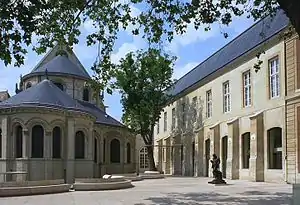 Parvis of the Museum of Arts and Crafts and Industrial Design, on the Parisian Campus of CNAM.
Parvis of the Museum of Arts and Crafts and Industrial Design, on the Parisian Campus of CNAM..jpg.webp) The Avion III of Clément Ader (1841 - 1926) autodidact French inventor and engineer) at the Musée des Arts et Métiers on the Parisian campus of CNAM.
The Avion III of Clément Ader (1841 - 1926) autodidact French inventor and engineer) at the Musée des Arts et Métiers on the Parisian campus of CNAM. Parisian campus of CNAM, adjacent to the main Parisian campus, on the former campus of École Centrale, located on rue Montgolfier (3rd arrondissement).
Parisian campus of CNAM, adjacent to the main Parisian campus, on the former campus of École Centrale, located on rue Montgolfier (3rd arrondissement). Main Entrance of the parisian campus of CNAM, adjacent to the main Parisian campus of CNAM, located on the former campus of École Centrale, situated on rue Montgolfier (3rd arrondissement).
Main Entrance of the parisian campus of CNAM, adjacent to the main Parisian campus of CNAM, located on the former campus of École Centrale, situated on rue Montgolfier (3rd arrondissement). Fontaine du Vert Bois at one of the corner of the Parisian campus of CNAM, at the intersection between rue Saint Martin and rue du Vertbois.
Fontaine du Vert Bois at one of the corner of the Parisian campus of CNAM, at the intersection between rue Saint Martin and rue du Vertbois. Léon Vaudoyer (1803 – 1872) Architect of the CNAM Parisian Campus. He designed and conducted some of the CNAM buildings of the Parisian campus, along with the Institut de France building, during the nineteenth century.[28][29]
Léon Vaudoyer (1803 – 1872) Architect of the CNAM Parisian Campus. He designed and conducted some of the CNAM buildings of the Parisian campus, along with the Institut de France building, during the nineteenth century.[28][29]%252C_RP-P-1937-1373.jpg.webp) Guillaume Postel, one of the first professor of the Collège de France (another higher education institution categorised as Grand Etablissement, just like CNAM), is buried in the former priory on the Parisian Campus of CNAM.
Guillaume Postel, one of the first professor of the Collège de France (another higher education institution categorised as Grand Etablissement, just like CNAM), is buried in the former priory on the Parisian Campus of CNAM.
Campuses in the rest of Metropolitan France
CNAM is based in 160 other French cities. French regional CNAM Centres are independent and autonomous in terms of enrolment and selection of candidates. Half of the regional CNAM centres budget is allocated by the French regional councils. The nearest Frenchregional CNAM should apply in terms of enrolment, in other words, someone living in Marseille should enrol in Marseille and not in Paris, even if his desired curriculum is not available in Marseille. As the vast majority of curricula are taught online, students can attend them from their nearest CNAM regional centre. Shall some specific classes be available only in Paris or at another regionalc centre, the student can attend these courses on-site, shall it be required (for example laboratory sessions in Life Science, Physics or Chemistry). Regional centres providing Engineering diploma via the EiCNAM, the Grande Ecole Engineer School of CNAM are all certified by the French national committee responsible for evaluation and accreditation of higher education institutions for the training of professional engineers in France (in French: Commission des Titres d'Ingénieur, abbr.: CTI). Some CNAM regional centres are hosted by other partner universities, for example the CNAM centre of Aix-en-Provence is located at the campus of the French Grande Ecole engineering and research school: Arts et Métiers ParisTech.
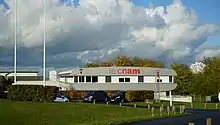
Campuses in overseas France
Campuses abroad[4]
Africa:
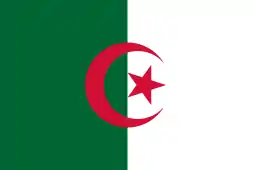 Algeria
Algeria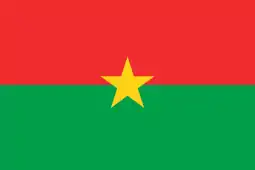 Burkina Faso
Burkina Faso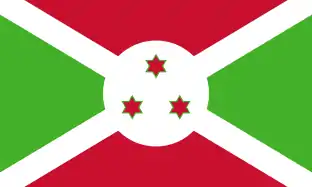 Burundi
Burundi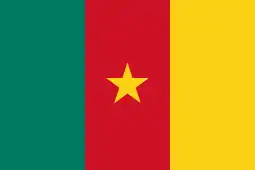 Cameroon
Cameroon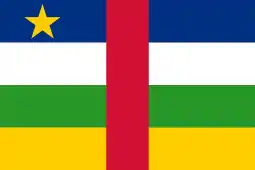 Central African Republic
Central African Republic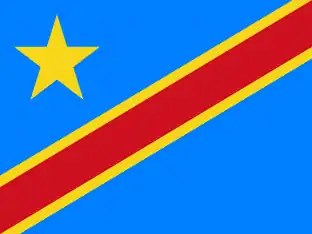 Democratic Republic of the Congo
Democratic Republic of the Congo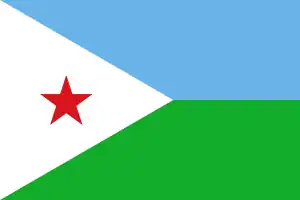 Djibouti
Djibouti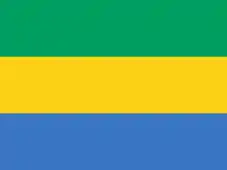 Gabon
Gabon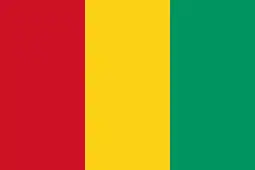 Guinea
Guinea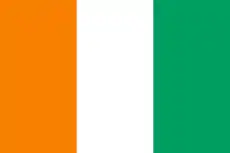 Ivory Coast
Ivory Coast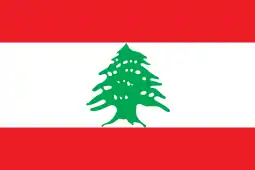 Lebanon: Network of 7 campus founded since 1971.
Lebanon: Network of 7 campus founded since 1971.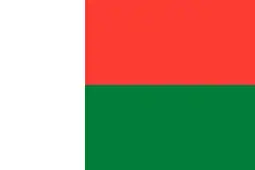 Madagascar
Madagascar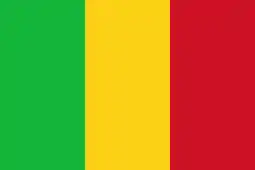 Mali
Mali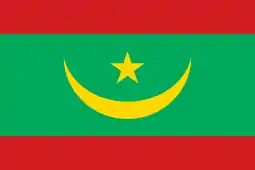 Mauritania
Mauritania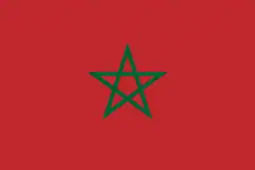 Morocco
Morocco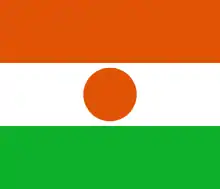 Niger
Niger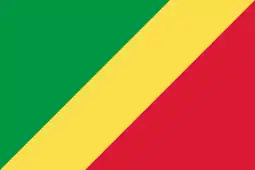 Republic of the Congo
Republic of the Congo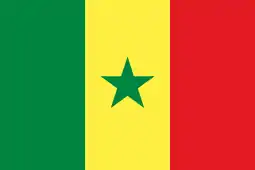 Senegal
Senegal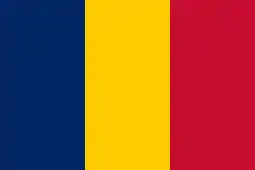 Chad
Chad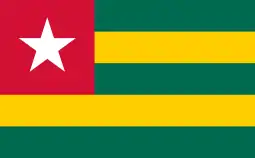 Togo
Togo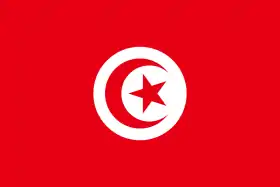 Tunisia
Tunisia
America:
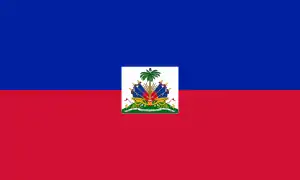 Haiti (in partnership with the State University of Haiti)
Haiti (in partnership with the State University of Haiti)
Asia:
 China: Dongguan
China: Dongguan
- Establishment in 2017 of the Franco-Chinese Institute DGUT-CNAM, in partnership with the Dongguan University of Technology (DGUT).[5]
 China: Wuhan
China: Wuhan
- Founding in 2012 of the Franco-Chinese Institute of Engineering and Management, in cooperation with the Wuhan University.[6]
Europe:
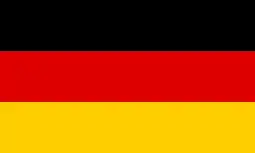 Germany
Germany
- In partnership with the Darmstadt University of Applied Sciences | German: Hochschule Darmstadt)
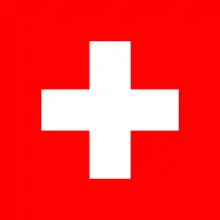 Switzerland /
Switzerland / 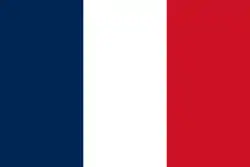 France
France
- The Lemanic Basin (Geneva Lake Region) CNAM Centre is a border-located and binational public higher education institute recognised by both the Swiss and French higher education systems, via the EduQua Label (The Swiss quality label for further education institutions).[9] Classes are given in Saint-Genis-Pouilly, Annemasse and at the University of Geneva in Accounting, Economics, Engineering, IT, Law, Management and Real Eastate Management.[10]
Faculties and Schools
Faculties
On the 7th July 2016, the CNAM's board of directors enacted a reform via the directory of decisions number 2016-24 AG to 2016-33 AG,[30] which goal was to create 16 national pedagogic teams (French: équipes pédagogiques nationales | abbr.: EPN) in lieu of the School for industrial sciences and technologies (French: écoles Sciences industrielles et technologies de l’information | abbr.: Siti) and the School for Management and Society Management et société (French: école Management et Société | abbr.: MS). Some Pedagogic Teams below are also sometimes Schools per se.
- EPN 1: Building and energetics
- EPN 2: School for Surveyors, Geometricians-Topographers (Abbreviation of the chool name in French: ESGT)
- EPN 3: Electronics, Electrotechnics, Automation, Measurement
- EPN 4: Mechanical Engineering and Materials Science
- EPN 5: IT
- EPN 6: Mathematics and Statistics
- EPN 7: Chemical, pharmaceutical and Food Industries
- EPN 8: Intechmer (Maritime Transport and Marine Biology)
- EPN 9: Economics, Finance, Insurances, Banking (Efab)
- EPN10: Accounting, Finance Monitoring, Audit (CCA)
- EPN 11: Territories (Geography and Sociology)
- EPN 12: Health and Solidarities
- EPN 13: Labour
- EPN 14: Law and Real Estate
- EPN 15: Strategies and Management
- EPN 16: Innovation
Schools and institutes of CNAM
- Ecole Pasteur-Cnam: School specialised in public health
- Ecole Vaucanson: first National Management and Engineering Grande Ecole Higher Education Institution for students coming from vocational baccalaureate curricula.
- EiCnam Ecole d'ingénieur.e: "Ei-" standing for: Ecole d'Ingénieur (in English: Engineering School), Grande Ecole curriculum, which like any other Grande Ecole selects students via a national competitive examination.
- ENASS: French National School for Insurances
- Enjmin: School specialised in video games and interactive media
- ESGT: School for surveyor/geometrician-topographer
- ICH: Institute specialised in Law applied to Real Estate
- ICSV: Institute specialing in Sales and Marketing
- FFI: College for Refrigeration, Industrial Cooling and HVAC engineering
- IHIE-SSET: Institute for Hygiene and Food Safety
- IIM: Institute specialised in Management
- Inetop: Institute for the study of Labour, career counselling, personal development, education
- INTD: Institute for Culture, Information, Technology and Society
- Intec: Institute for Economics and Accountancy
- Institute of Technology in Management, IT, Industrial Engineering, Physical Measurement, Material Studies
- ISTNA: Institute for Nutrition and Food Science
- ITIP: Institute for Transport and Ports
The academic staff headcount in 2020 reached 1,670, with 568 professors/researchers and 1,120 academic staff, which are called at CNAM: Biatss (French: bibliothèque, ingénieurs, administratifs, techniciens, social et santé | English: library staff, engineering staff, administrative staff, technical taff, social and health services staff).[12]
Doctoral college, doctoral schools and research centres
Doctoral college and doctoral schools[31]
The CNAM provides via its doctoral college PhD-curricula via distance-learning (along the job), or on-site. There are 91 PhD candidates enrolled at the EiCNAM Grande Ecole engineering School,[23] and a total of 350 professors-researchers and academic staff for a total of 340 doctoral students[32] from 40 different nationalities[33] enrolled at CNAM worldwide, at which 60 thesis defence/examination take place yearly.[13][33] The doctoral college of CNAM comprises two doctoral schools:
- a doctoral school specialised in Science and Engineering (French: Sciences des métiers de l’ingénieur.e | abbr.: SMI), in partnership with the French Grande Ecole Arts et métiers (doctoral school code: ED 432),
- and a doctoral school Abbé-Grégoire specialised in Humanities and Arts (ED 546).
Doctoral schools in partnership with other French Universities:
- ED 591 : Physics, engineering sciences and energetics
- ED 532 : Mathematics and informatics
- ED 435 : Agriculture, biology, environment, health
- ED 146 : Sciences, technology, health
- Doctoral College of Paris-Saclay University.
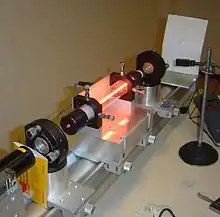
Research centres and research laboratories of CNAM[39]
- Cedric: Research centre in informatics and communication
- CEET: Research centre for labour and employment
- CRTD: Research centre for labour and development
- Dicen-IdF: Information system in a digital era
- DynFluid: Laboratory of fluid dynamics
- Eren: Research team in food
- Esycom: Electronics, communication systems and microsystems
- Foap: Vocational training and professional apprenticeship
- GBCM: Laboratory of genomics, bioinformatics and molecular chemistry
- GeF: Laboratory of geomatics and real estate
- HT2S: History of technosciences in our society
- Lafset: Laboratory for refrigeration, industrial cooling, HVAC engineering, energetic and thermal systems
- LCM: Shared laboratory of metrology (LNE-Cnam)
- Lifse: Laboratory in fluid engineering and energetic systems
- Lirsa: Interdisciplinary laboratory in the research for action, piloting and decision-making (applied to economics, law, management)
- Lise: Interdisciplinary laboratory for sociology applied to economics
- LMSSC: Laboratory for structural mechanics and coupled systems
- M2N: Mathematical modelling and digitalisation
- MESuRS: Modelling, epidemiology and health risk monitoring
- Pimm: Process and engineering in mechanic and material sciences
- Satie: Applications and systems of communication technologies and energetics
- SD (ESDR3C): Intelligence, security and defence, cyber-threats, crisis
Partner research centres
- GENIAL: Process engineering, food engineering
- Lusac: University laboratory of applied science in Cherbourg - Brittany (Intechmer)
- Metabiot: use of big data for the safety insurance of animal food (in cooperation with ANSES: the French Agency for Food, Environmental and Occupational Health & Safety)
- SayFood: Paris-Saclay Food and Bioproduct Engineering Research Unit (SayFood), in partnership with AgroParisTech, Inrae
- IAT: Institute in aeronautics and aerodynamics
Curricula
The array of curricula at the CNAM spans the following:
- Multidisciplinary programs;
- 1,350 modular programs;
- 1,500 specific sessions;
- 480 diplomas or certificates, from undergraduate to doctoral programs.
Notable alumni, faculties, academic staff and donators
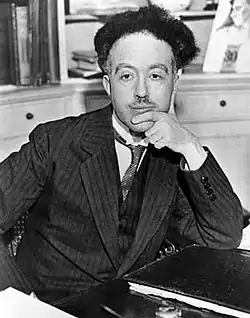 Louis de Broglie (academic staff). Nobel Prize Laureate in Physics in 1929, member of the governance committee of the CNAM in 1945 and member of the technical committee of the test laboratory of the CNAM in 1945.[40]
Louis de Broglie (academic staff). Nobel Prize Laureate in Physics in 1929, member of the governance committee of the CNAM in 1945 and member of the technical committee of the test laboratory of the CNAM in 1945.[40] Louis Pasteur (alumnus). Pasteur studied at the École Normale Supérieure and at the CNAM, chemist and biologist. He is regarded as one of the founders of modern bacteriology and has been honoured as the "father of bacteriology" and as the "father of microbiology".[41]
Louis Pasteur (alumnus). Pasteur studied at the École Normale Supérieure and at the CNAM, chemist and biologist. He is regarded as one of the founders of modern bacteriology and has been honoured as the "father of bacteriology" and as the "father of microbiology".[41]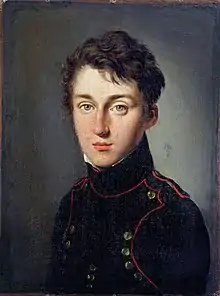 Nicolas Léonard Sadi Carnot (alumnus). Carnot graduated from the École Polytechnique and from the CNAM, physicist, father of modern Thermodynamics and of the Carnot-Process.[41]
Nicolas Léonard Sadi Carnot (alumnus). Carnot graduated from the École Polytechnique and from the CNAM, physicist, father of modern Thermodynamics and of the Carnot-Process.[41]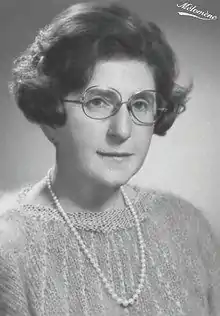 Geneviève Meurgues (alumnus). French explorer, museologist, curator, conservator, chemical engineer and lecturer. As a professor at the National Museum of Natural History, she specialised in the conservation of natural history specimens.[42][43] The Relictocarabus meurguesianus, a ground beetle discovered in Morocco was named in her honour.[44]
Geneviève Meurgues (alumnus). French explorer, museologist, curator, conservator, chemical engineer and lecturer. As a professor at the National Museum of Natural History, she specialised in the conservation of natural history specimens.[42][43] The Relictocarabus meurguesianus, a ground beetle discovered in Morocco was named in her honour.[44]
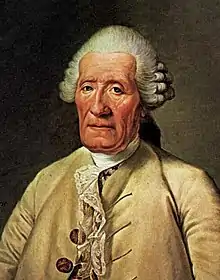 Jacques de Vaucanson (donator). Engineer who invented the first all-metal lathe (a loom for weaving wavy fabrics) in the midst of the Industrial Revolution, gave his personal collection to the CNAM as well as his name to a street adjacent to the CNAM.[45][41] As a token of his work, the Vaucanson Institute was established in 2010 by the CNAM.[46]
Jacques de Vaucanson (donator). Engineer who invented the first all-metal lathe (a loom for weaving wavy fabrics) in the midst of the Industrial Revolution, gave his personal collection to the CNAM as well as his name to a street adjacent to the CNAM.[45][41] As a token of his work, the Vaucanson Institute was established in 2010 by the CNAM.[46].jpg.webp) Jean-Baptiste Say (alumnus and faculty). Classical economist, Say was professor at the CNAM, and at the Collège de France.[47]
Jean-Baptiste Say (alumnus and faculty). Classical economist, Say was professor at the CNAM, and at the Collège de France.[47]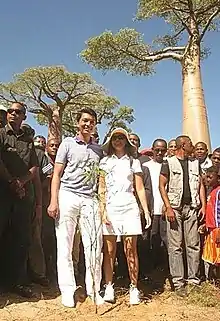 Mialy Rajoelina (alumnus). First Lady of Madagascar. She is the spouse of Andry Rajoelina, the president of the High Transitional Authority of Madagascar from 2009 until 2014 and president of Madagascar since 2019.
Mialy Rajoelina (alumnus). First Lady of Madagascar. She is the spouse of Andry Rajoelina, the president of the High Transitional Authority of Madagascar from 2009 until 2014 and president of Madagascar since 2019.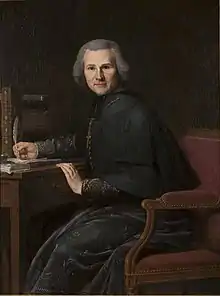

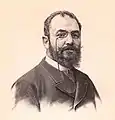 Léon Bourgeois (academic staff). Nobel Peace Prize and Chairman of the board of directors of the CNAM.[49]
Léon Bourgeois (academic staff). Nobel Peace Prize and Chairman of the board of directors of the CNAM.[49].jpg.webp) Jean Prouvé (alumnus and faculty). French metal worker, self-taught architect and designer, Prouvé was Professor at the CNAM from 1957 until 1970.[50]
Jean Prouvé (alumnus and faculty). French metal worker, self-taught architect and designer, Prouvé was Professor at the CNAM from 1957 until 1970.[50]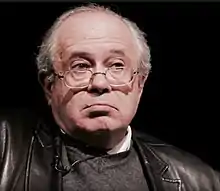 Jacques-Alain Miller (faculty). Guest lecturer from 1995 to 2009, Miller is one of the founder members of the School of the Freudian Cause (French: École de la Cause freudienne) and of the World Association of Psychoanalysis which he presided from 1992 until 2002.[51]
Jacques-Alain Miller (faculty). Guest lecturer from 1995 to 2009, Miller is one of the founder members of the School of the Freudian Cause (French: École de la Cause freudienne) and of the World Association of Psychoanalysis which he presided from 1992 until 2002.[51] Marc Seguin (alumnus). French engineer, inventor of the wire-cable suspension bridge and the multi-tubular steam-engine boiler.[52]
Marc Seguin (alumnus). French engineer, inventor of the wire-cable suspension bridge and the multi-tubular steam-engine boiler.[52] Valérie Petit (alumnus). French politician who has been serving as a member of the French National Assembly since the 2017 elections, representing the 9th constituency of the department of Nord. From 2016 until 2020, she was a member of La République En Marche!. In parliament, Petit serves on the Finance Committee.
Valérie Petit (alumnus). French politician who has been serving as a member of the French National Assembly since the 2017 elections, representing the 9th constituency of the department of Nord. From 2016 until 2020, she was a member of La République En Marche!. In parliament, Petit serves on the Finance Committee.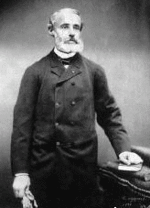 Gaston Planté (academic staff). Laboratory assistant at the CNAM and inventor in 1859 of the lead acid battery and of the first reusable battery: the lead accumulator, also called: lead-acid (storage) battery.[53]
Gaston Planté (academic staff). Laboratory assistant at the CNAM and inventor in 1859 of the lead acid battery and of the first reusable battery: the lead accumulator, also called: lead-acid (storage) battery.[53]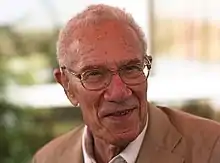 Robert Solow (Faculty). Guest lecturer. Solow is an Economist specialised in Macroeconomics and Neo-Keynesian economics, Laureate of the Nobel Memorial Prize in Economic Sciences which alma mater is: Massachusetts Institute of Technology.
Robert Solow (Faculty). Guest lecturer. Solow is an Economist specialised in Macroeconomics and Neo-Keynesian economics, Laureate of the Nobel Memorial Prize in Economic Sciences which alma mater is: Massachusetts Institute of Technology.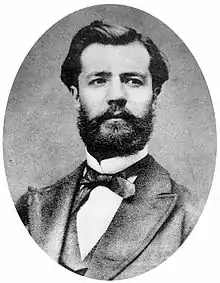 Henri Fayol (faculty and academic staff), professor and director from 1888 until 1918. He was a French mining engineer, mining executive, author and director of mines who developed a general theory of business administration that is often called Fayolism.[54] He and his colleagues developed this theory independently of scientific management but roughly contemporaneously. Like his contemporary Frederick Winslow Taylor, he is widely acknowledged as a founder of modern management methods.[54]
Henri Fayol (faculty and academic staff), professor and director from 1888 until 1918. He was a French mining engineer, mining executive, author and director of mines who developed a general theory of business administration that is often called Fayolism.[54] He and his colleagues developed this theory independently of scientific management but roughly contemporaneously. Like his contemporary Frederick Winslow Taylor, he is widely acknowledged as a founder of modern management methods.[54]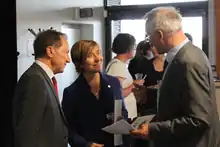 Anne-France Brunet (alumnus). French politician of La République En Marche! who has been serving as a member of the French National Assembly since the 2017 elections, representing the department of Loire-Atlantique.
Anne-France Brunet (alumnus). French politician of La République En Marche! who has been serving as a member of the French National Assembly since the 2017 elections, representing the department of Loire-Atlantique.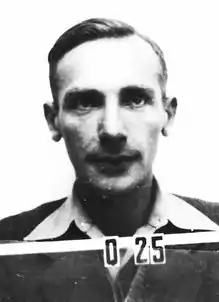 Josef Rotblat (faculty). Physicist and professor at CNAM. Laureate of the Nobel Peace Prize.
Josef Rotblat (faculty). Physicist and professor at CNAM. Laureate of the Nobel Peace Prize._-_Philippe_Binant_Archives.jpg.webp) Yves F. Meyer (faculty). Mathematician and professor at CNAM. Meyer is a French mathematician. He is among the progenitors of wavelet theory, having proposed the Meyer wavelet. Meyer was awarded the Abel Prize in 2017.
Yves F. Meyer (faculty). Mathematician and professor at CNAM. Meyer is a French mathematician. He is among the progenitors of wavelet theory, having proposed the Meyer wavelet. Meyer was awarded the Abel Prize in 2017. Alexandre Millerand (alumnus). He was Prime Minister of France from 20 January to 23 September 1920 and President of France from 23 September 1920 to 11 June 1924.
Alexandre Millerand (alumnus). He was Prime Minister of France from 20 January to 23 September 1920 and President of France from 23 September 1920 to 11 June 1924.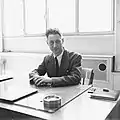 Pierre Étienne Bézier (faculty). Mathematician, professor of production (economics) from 1968 until 1979, was a French engineer and one of the founders of the fields of solid, geometric and physical modelling as well as in the field of representing curves, especially in computer-aided design and manufacturing systems.
Pierre Étienne Bézier (faculty). Mathematician, professor of production (economics) from 1968 until 1979, was a French engineer and one of the founders of the fields of solid, geometric and physical modelling as well as in the field of representing curves, especially in computer-aided design and manufacturing systems. Claude Cohen-Tannoudji (Faculty). Guest lecturer. As a French physicist, he shared the 1997 Nobel Prize in Physics with Steven Chu and William Daniel Phillips for research in methods of laser cooling and trapping atoms. Currently he is still an active researcher, working at the École normale supérieure.
Claude Cohen-Tannoudji (Faculty). Guest lecturer. As a French physicist, he shared the 1997 Nobel Prize in Physics with Steven Chu and William Daniel Phillips for research in methods of laser cooling and trapping atoms. Currently he is still an active researcher, working at the École normale supérieure.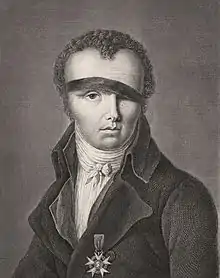 Nicolas-Jacques Conté (founding member) was a French physicist, chemist, aerostat pilot (balloonist), portraitist, inventor of the modern pencil. He participated to the Campaign in Egypt of Napoleon. He was one of the first founding members of the original triumvirate of CNAM.
Nicolas-Jacques Conté (founding member) was a French physicist, chemist, aerostat pilot (balloonist), portraitist, inventor of the modern pencil. He participated to the Campaign in Egypt of Napoleon. He was one of the first founding members of the original triumvirate of CNAM..jpg.webp) Bernard Kouchner (alumnus) at the annual World Economic Forum in Davos 2008, French doctor and politician, he was the Minister of Foreign and European Affairs from 2007 until 2010 and Minister of Health from 1992 until 1993. He is the co-founder of Médecins Sans Frontières and Médecins du Monde.[55] From 1999 until 2001, he was nominated as the second UN Special Representative and Head of the United Nations Interim Administration Mission in Kosovo (UNMIK).[56]
Bernard Kouchner (alumnus) at the annual World Economic Forum in Davos 2008, French doctor and politician, he was the Minister of Foreign and European Affairs from 2007 until 2010 and Minister of Health from 1992 until 1993. He is the co-founder of Médecins Sans Frontières and Médecins du Monde.[55] From 1999 until 2001, he was nominated as the second UN Special Representative and Head of the United Nations Interim Administration Mission in Kosovo (UNMIK).[56] Francis Mer (academic staff) at the IMF in 2003. Former French Minister of Economy from 2002 to 2004. is a French businessman, industrialist and politician. A former alumnus of the École Polytechnique, and of the Mines Paristech Grande Ecole Engineer School, he is a member of the Corps des mines. He was one of the former president of the steering committee of CNAM.
Francis Mer (academic staff) at the IMF in 2003. Former French Minister of Economy from 2002 to 2004. is a French businessman, industrialist and politician. A former alumnus of the École Polytechnique, and of the Mines Paristech Grande Ecole Engineer School, he is a member of the Corps des mines. He was one of the former president of the steering committee of CNAM.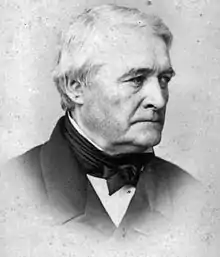 Claude Pouillet was a French physicist and a professor of physics at the Sorbonne, professor and third director of CNAM as well as member of the French Academy of Sciences. Pouillet developed the Pouillet effect. He corrected Joseph Fourier's work on the surface temperature of the earth, developing the first real mathematical treatment of the greenhouse effect. He speculated that water vapour and carbon dioxide might trap infrared radiation in the atmosphere, warming the earth enough to support plant and animal life.[57]
Claude Pouillet was a French physicist and a professor of physics at the Sorbonne, professor and third director of CNAM as well as member of the French Academy of Sciences. Pouillet developed the Pouillet effect. He corrected Joseph Fourier's work on the surface temperature of the earth, developing the first real mathematical treatment of the greenhouse effect. He speculated that water vapour and carbon dioxide might trap infrared radiation in the atmosphere, warming the earth enough to support plant and animal life.[57]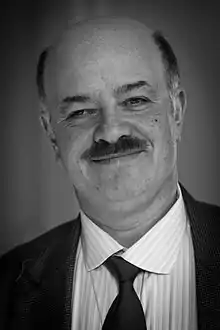 Alain Bauer (faculty). French criminologist, professor of criminology since 2009. He is also a senior research fellow at the John Jay College of Criminal Justice (New York) and the China University of Political Science and Law (Beijing), and Associate Professor at Fudan University (Shanghai, PRC).[58]
Alain Bauer (faculty). French criminologist, professor of criminology since 2009. He is also a senior research fellow at the John Jay College of Criminal Justice (New York) and the China University of Political Science and Law (Beijing), and Associate Professor at Fudan University (Shanghai, PRC).[58]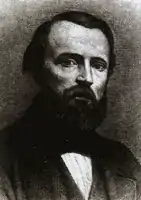 Pierre Athanase Larousse (alumnus) was a French grammarian, lexicographer and encyclopaedist. He published many of the outstanding educational and reference works of 19th-century France, including the 15 volume Grand dictionnaire universel du XIXe siècle.
Pierre Athanase Larousse (alumnus) was a French grammarian, lexicographer and encyclopaedist. He published many of the outstanding educational and reference works of 19th-century France, including the 15 volume Grand dictionnaire universel du XIXe siècle.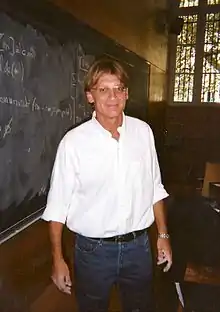 Pierre-Louis Lions (Faculty). Lions is a French mathematician. He is known for a number of contributions to the fields of partial differential equations and the calculus of variations. He was a recipient of the 1994 Fields Medal and guest lecturer at CNAM.[59]
Pierre-Louis Lions (Faculty). Lions is a French mathematician. He is known for a number of contributions to the fields of partial differential equations and the calculus of variations. He was a recipient of the 1994 Fields Medal and guest lecturer at CNAM.[59] Thibault Damour (faculty). Professor of theoretical physics at the Institut des Hautes Études Scientifiques (IHÉS) since 1989 and at CNAM. e contributed greatly to the understanding of gravitational waves from compact binary systems. He invented the "effective one-body" approach to solving the orbital trajectories of binary black holes. He is also a specialist in string theory. In 2021 he was awarded the Balzan Prize for Gravitation: physical and astrophysical aspects (shared with Alessandra Buonanno).[60]
Thibault Damour (faculty). Professor of theoretical physics at the Institut des Hautes Études Scientifiques (IHÉS) since 1989 and at CNAM. e contributed greatly to the understanding of gravitational waves from compact binary systems. He invented the "effective one-body" approach to solving the orbital trajectories of binary black holes. He is also a specialist in string theory. In 2021 he was awarded the Balzan Prize for Gravitation: physical and astrophysical aspects (shared with Alessandra Buonanno).[60].jpg.webp) Serge Haroche is a French physicist who was awarded the 2012 Nobel Prize for Physics jointly with David J. Wineland for "ground-breaking experimental methods that enable measuring and manipulation of individual quantum systems", a study of the particle of light, the photon.[61][62][63] He was guest lecturer at CNAM.
Serge Haroche is a French physicist who was awarded the 2012 Nobel Prize for Physics jointly with David J. Wineland for "ground-breaking experimental methods that enable measuring and manipulation of individual quantum systems", a study of the particle of light, the photon.[61][62][63] He was guest lecturer at CNAM.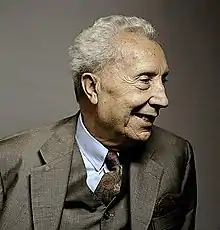 Marc Fumaroli (faculty) was a member of the Académie française of the Académie des inscriptions et belles-lettres. Guest lecturer at CNAM, was a French historian and essayist who was widely respected as an advocate for French literature and culture.[64]
Marc Fumaroli (faculty) was a member of the Académie française of the Académie des inscriptions et belles-lettres. Guest lecturer at CNAM, was a French historian and essayist who was widely respected as an advocate for French literature and culture.[64]_-_Philippe_Binant_Archives.jpg.webp) Gilles Gaston Granger (faculty). Professor at CNAM, epistemologist of the School of Analytic philosophy. His works discuss the philosophy of logic, mathematics, human and social sciences, Aristotle, Jean Cavaillès (French Philosopher and mathematician), and Ludwig Wittgenstein.[65]
Gilles Gaston Granger (faculty). Professor at CNAM, epistemologist of the School of Analytic philosophy. His works discuss the philosophy of logic, mathematics, human and social sciences, Aristotle, Jean Cavaillès (French Philosopher and mathematician), and Ludwig Wittgenstein.[65]_(cropped).jpg.webp) Stéphane Le Foll (alumnus). French politician serving as Mayor of Le Mans since 2018. A member of the Socialist Party, he was Minister of Agriculture under President François Hollande from 2012 to 2017.
Stéphane Le Foll (alumnus). French politician serving as Mayor of Le Mans since 2018. A member of the Socialist Party, he was Minister of Agriculture under President François Hollande from 2012 to 2017. Michel Cantal-Dupart (faculty). Architect and urbanist, he held the research chair for urban planning from 1998 until 2010. He was professor emeritus until 2014 and became honorary professor since then.[66] He contributed with Jean-Marie Duthilleul et Jean Nouvel to the reflection on the Grand Paris in 2010, in a report he submitted to President François Hollande in 2013.[67]
Michel Cantal-Dupart (faculty). Architect and urbanist, he held the research chair for urban planning from 1998 until 2010. He was professor emeritus until 2014 and became honorary professor since then.[66] He contributed with Jean-Marie Duthilleul et Jean Nouvel to the reflection on the Grand Paris in 2010, in a report he submitted to President François Hollande in 2013.[67]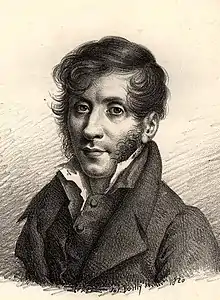 Baron Charles Dupin (faculty). French mathematician, engineer, economist[68] and politician, particularly known for work in the field of mathematics, where the Dupin cyclide and Dupin indicatrix are named after him; and for his work in the field of statistical and thematic mapping.[69] In 1826 he created the earliest known choropleth map.[70] He was one of the founding members of the first three research chairs of CNAM.
Baron Charles Dupin (faculty). French mathematician, engineer, economist[68] and politician, particularly known for work in the field of mathematics, where the Dupin cyclide and Dupin indicatrix are named after him; and for his work in the field of statistical and thematic mapping.[69] In 1826 he created the earliest known choropleth map.[70] He was one of the founding members of the first three research chairs of CNAM. Ferdinand Arnodin (alumnus). French engineer and industrialist, specialising in cableway transporters, he is regarded as the inventor of the transporter bridge, having been the first to patent the idea in 1887.[71]
Ferdinand Arnodin (alumnus). French engineer and industrialist, specialising in cableway transporters, he is regarded as the inventor of the transporter bridge, having been the first to patent the idea in 1887.[71]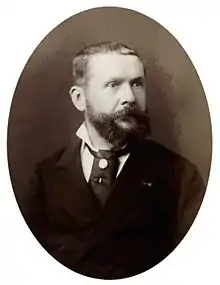 Gaston Tissandier (alumnus). French chemist, meteorologist, aviator and editor. Adventurer, he managed to escape besieged Paris by balloon in September 1870. Founder and editor of the scientific magazine La Nature.
Gaston Tissandier (alumnus). French chemist, meteorologist, aviator and editor. Adventurer, he managed to escape besieged Paris by balloon in September 1870. Founder and editor of the scientific magazine La Nature. Eric Girardin (alumnus). French politician of La République En Marche! who has been serving as a member of the French National Assembly since the 2017 elections, representing the department of Marne.
Eric Girardin (alumnus). French politician of La République En Marche! who has been serving as a member of the French National Assembly since the 2017 elections, representing the department of Marne..jpg.webp) Paul-Henri Sandaogo Damiba (alumnus). Burkinabé military officer who heads the Patriotic Movement for Safeguard and Restoration, having overthrown President Roch Marc Christian Kaboré on 24 January 2022 in the 2022 Burkina Faso coup d'état. He graduated with a Master's in criminology and followed classes of criminologist Alain Bauer. He views himself as an anti-Jihadi terrorism strategist and published the book:"Armées ouest-africaines et terrorisme : réponses incertaines ?".[72]
Paul-Henri Sandaogo Damiba (alumnus). Burkinabé military officer who heads the Patriotic Movement for Safeguard and Restoration, having overthrown President Roch Marc Christian Kaboré on 24 January 2022 in the 2022 Burkina Faso coup d'état. He graduated with a Master's in criminology and followed classes of criminologist Alain Bauer. He views himself as an anti-Jihadi terrorism strategist and published the book:"Armées ouest-africaines et terrorisme : réponses incertaines ?".[72]
Other notable alumni and founding members
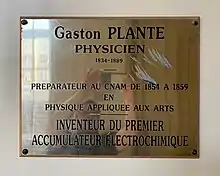
- Alexandre Vandermonde (Founding member). Mathematician. From 1794 on, Vandermonde was a founding member of the French Conservatory of Arts and Crafts, examiner with the École polytechnique, professor at the École Normale Supérieure.
- The secret society of the French Conservatory of Arts and Crafts was coined after him, as a token of his work.[73]
- Alain Wisner (alumnus). French doctor and a founder of the Activity-centered ergonomics but also honorary director of the Ergonomics laboratory of the French Conservatory of Arts and Crafts and President of the Ergonomics Society of French language from 1969 to 1971.[74]
- Alice Saunier-Seïté (faculty), professor at CNAM, member of the Institut de France (Académie des Sciences Morales et Politiques) former French Minister of Universities, first woman to be elected at a research chair of CNAM.
- André Sainte-Laguë (faculty), French mathematician and professor at the CNAM from 1938 until 1950, curator of the Mathematics section at the Palais de la Découverte.
- Benoît Roy (alumnus). Industrialist and politician, he established in 1985 the company Audiolab, specialised in hearing aid, of which he is the CEO since then. He is the honorary president of the French hearing aid association and vice-president of the European hearing aid association. He is member of the RPR, then of the UDF and finally of the Nouveau Centre political parties. He was briefly first French constituency of the Indre-et-Loire department in 2002.
- Christian Hauvette (alumnus). French architect, born in Marseilles, he studied with Jean Prouvé and was awarded the Grand Prix national de l'architecture in 1991, an award presented by the French Culture Ministry for his career in architecture.
- Ferdinand Joseph Arnodin (alumnus). French engineer and industrialist, specialising in cableway transporters, he is regarded as the inventor of the transporter bridge, having been the first to patent the idea in 1887.[75]
- François Joseph Fournier (alumnus). Self-taught Belgian adventurer and entrepreneur who explored Mexico and the island of Porquerolles. He was born into a family of modest means, in Clabecq, Belgium and died on Porquerolles.
- François Gernelle (born December 20, 1944) is a French engineer, computer scientist and entrepreneur famous for inventing the first micro-computer using a micro-processor, the Micral N.
 Exhibit of the Micral N, at the CNAM Industrial Design Museum, on the parisian campus of CNAM - first micro-computer using a micro-processor in the world, invented by alumnus François Grenelle.
Exhibit of the Micral N, at the CNAM Industrial Design Museum, on the parisian campus of CNAM - first micro-computer using a micro-processor in the world, invented by alumnus François Grenelle. - Jean-Baptiste Le Roy (alumnus). Physicist and Encyclopedist, member of the French Academy.
- Jean Ferrat (alumnus). Singer-songwriter.[76]
- Lucien Bossoutrot (alumnus). French aviator and pilot of the first public aerial transport between Paris and London in 1919, twice world-record in closed-circuit flights (8,805 km in 1931 and 10,601 km in 1932).[77]
- Jean Salençon (academic staff), professor at the Grande Ecole École polytechnique, President of the French Academy of Sciences and of the Institut de France, founding member of the French Academy of Technologies and member of the steering committee of the CNAM.
- Jean-Jacques Salomon (faculty), student of Raymond Aron, founder and director of the Directorate for Science, Technology and Innovation at the OECD, guest lecturer at the Massachusetts Institute of Technology, professor at CNAM.
- Margaret Maruani (research fellow), Tunisian-French sociologist and researcher.
- Michel Colomban (alumnus). French aeronautical engineer known for his home-built aircraft. He designed the Colomban Cri-cri in 1973, which follower was the model: Cri-Cri (F-PRCQ) i.e. the first all-electric four-engine aircraft in the world.
- Navi Radjou (alumnus). French-Indian born in French-speaking Puducherry, scholar, innovation and leadership advisor based in the Silicon Valley. He is a Fellow at the Judge Business School at the University of Cambridge and has spoken and written widely on the theme of frugal innovation.
- Stasys Ušinskas (alumnus). Lithuanian artist of multiple creative fields: modern painting, stained glass, scenography, animation, puppetry and decorative glass artworks. He is widely regarded as the "father of Lithuanian stained glass art".
- Terence John Quinn CBE FRS (alumnus) is a British physicist, and emeritus director of the International Bureau of Weights and Measures in Paris, where he was director from 1988 until 2003. He is since 2000 Doctor Honoris Causa at CNAM.[78]
.jpg.webp) The Colomban Cri-Cri (Cricket) F-PRCQ exhibited under an Airbus A380 at the 2011 MAKS airshow, the world's first all-electric (CO2-neutral) 4-engine aircraft developed by EADS Innovation Works and manufactured by Aero Composites Saintonge, following alumnus Michel Colomban's Cri-Cri aircraft series.
The Colomban Cri-Cri (Cricket) F-PRCQ exhibited under an Airbus A380 at the 2011 MAKS airshow, the world's first all-electric (CO2-neutral) 4-engine aircraft developed by EADS Innovation Works and manufactured by Aero Composites Saintonge, following alumnus Michel Colomban's Cri-Cri aircraft series.
Traditions
- Vandermonde : secret society of the French Conservatory of Arts and Crafts, allegedly based on the Skull & Bones model of Yale University.[73][79]
- At the French Conservatory of Arts and Crafts, students are commonly (and also officially) called "auditeurs", referring to audience/listener (instead of "étudiants", in English: students).
Graduates from the Grande Ecole Engineering School: EiCNAM, receive coloured graduation scarf during the diploma bestowal ceremony, depending on the major they belong to:
- Building and public works Engineering, Energetics Engineering, Nuclear Power Engineering,
- IT Engineering,
- Bioinformatics Engineering, Chemical Engineering, Bio-Engineering, Process Engineering, Risk Management Engineering,
- Automation and Robotics Engineering, Electrical Engineering,
- Electronic Systems Engineering, Electronic Systems, Telecommunication and IT Engineering, Electronic system and railway signalling Engineering,
- Aeronautics and Aerospace Engineering, Rail Operation Engineering,
- Material Engineering, Mechanical Engineering, Mechatronics Engineering.
Foundation
In 1973, the Louis-de-Broglie Foundation was created at the French National Conservatory of Arts and Crafts by Nobel Prize Laureate in Physics Louis de Broglie along with Physics Nobel-Price Laureate Louis Néel, and Fields medallist René Thom, on the occasion of the fiftieth anniversary of the discovery of matter waves. It is now located at the French Academy of Sciences in Paris.
 Louis de Broglie (1892 – 1987) Nobel Prize Laureate in Physics.
Louis de Broglie (1892 – 1987) Nobel Prize Laureate in Physics. Louis Néel (1904– 2000) Nobel Prize Laureate in Physics.
Louis Néel (1904– 2000) Nobel Prize Laureate in Physics.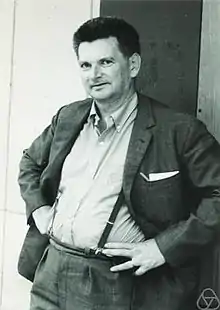 René Thom (1923 – 2002) Fields medallist.
René Thom (1923 – 2002) Fields medallist.
Affiliations and memberships
CNAM is a part of HeSAM (French: Hautes Écoles Sorbonne Arts et Métiers University), a cluster for higher education and research as a group of universities and institutions comprising 11 members and 4 associated institutions, totalling 110,000 enrolled students.
The members are:
- École nationale supérieure des arts et métiers (Arts et Métiers)
- French National Conservatory of Arts and Crafts (CNAM)
- Centre des études supérieures industrielles (CESI)
- École Boulle
- École Duperré
- École Estienne
- École nationale supérieure des arts appliqués et des métiers d'art (ENSAAMA)
- École nationale supérieure d'architecture de Paris-La Villette (ENSAPLV)
- École nationale supérieure de création industrielle (ENSCI - Les Ateliers)
- Institut Français de la Mode (IFM)
- Paris School of Business (PSB)
See also
(in French) Écoles de l'an III scientifiques
Notes
- CNAM Officials
- Rapport d'évaluation du Conservatoire national des arts et métiers (Cnam) par l'Aeres, 11/2013 p.5 (p.6 du PDF)
- CNAM centres in 160 others cities in France and overseas territories
- Cnam. "Liste des centres d'enseignement à l'étranger | Intec | Cnam". Intec (in French). Retrieved 14 March 2022.
- Cnam. "Centre Cnam Chine | International | Cnam". International (in French). Retrieved 21 March 2022.
- Cnam. "Création de l'institut franco-chinois d'ingénierie et de management | International | Cnam". International (in French). Retrieved 21 March 2022.
- Cnam. "Convention de partenariat avec Haïti | International | Cnam". International (in French). Retrieved 11 April 2022.
- Cnam. "Allemagne Hochschule Darmstadt | International | Cnam". International (in French). Retrieved 4 April 2022.
- "CNAM CENTRE D'ENSEIGNEMENT DU BASSIN LEMANIQUE". LE [Lyon-Entreprises] (in French). Retrieved 22 March 2022.
- "Le Conservatoire national des arts et métiers (CNAM)". www.maison-transfrontaliere.com. Retrieved 22 March 2022.
- Cnam. "Liste des centres d'enseignement à l'étranger | Intec | Cnam". Intec (in French). Retrieved 9 March 2022.
- "Rapport d'activité 2020 du Conservatoire national des arts et métiers" (in French). June 2021. pp. 9, 11.
- Hcéres, Rapport (16 July 2018). "Conservatoire national des arts et métiers - CNAM" (in French).
{{cite journal}}: Cite journal requires|journal=(help) - Cnam. "Equipe pédagogique nationale Stratégies | EPN Stratégies | Cnam". EPN Stratégies (in French). Retrieved 22 March 2022.
- admin (5 February 2020). "DOSSIER / La fréquentation des musées et lieux de patrimoine en France, en 2019 (05/02/2020)". Club Innovation & Culture CLIC France (in French). Retrieved 14 March 2022.
- Michel Nusimovici, Les écoles de l'an III, 2010.
- 'LA CONVENTION ET LA CRÉATION DU CONSERVATOIRE' (in French)
- Le pendule de Foucault perd la boule
- Foucault's pendulum is sent crashing to Earth http://www.timeshighereducation.co.uk/story.asp?storycode=411529
- The pendulum at the Pantheon is said to be a copy of the original that still hangs in an 11th-century chapel inside the Musée des Arts et Métiers.
- Cnam. "La Fondation du Cnam | Fondation du Cnam | Cnam". Fondation du Cnam (in French). Retrieved 9 March 2022.
- "Rapport Hcéres - Conservatoire national des arts et métiers - CNAM". 2018.
- "EI.CNAM : Classement des écoles d'ingénieurs 2022 - L'Etudiant". www.letudiant.fr. Retrieved 22 March 2022.
- "François Schuiten – 30 ans d'aventures en images | Vente n°2429 | Lot n°5 | Artcurial". www.artcurial.com. Retrieved 18 March 2022.
- Jean, Dhombres. "Denis Papin". FranceArchives (in French). Retrieved 14 March 2022.
- "Monument à Nicolas Leblanc – Paris (75003) | E-monumen". e-monumen.net (in French). 11 April 2012. Retrieved 18 March 2022.
- Simon, Paul (17 October 2007). "How Reaumur fell off the temperature scale". Times.
- "FRAN_IR_029852 - Online catalogue". www.siv.archives-nationales.culture.gouv.fr. Retrieved 9 March 2022.
- INHA (10 February 2010). "VAUDOYER, Léon" (in French). Retrieved 14 March 2022.
- Cnam. "Télécharger les recueils des actes administratifs de l'établissement. | Portail national | Cnam". Portail national (in French). Retrieved 22 March 2022.
- "La recherche scientifique au conservatoire des arts et métiers". 2022.
- Cnam. "Accueil | Recherche | Cnam". Recherche (in French). Retrieved 28 March 2022.
- Cnam. "Les études doctorales au Cnam | Recherche | Cnam". Recherche (in French). Retrieved 28 March 2022.
- Cnam. "Laboratoire Commun de Métrologie (LNE-Cnam)| Accueil | Laboratoire commun de métrologie | Cnam". Laboratoire commun de métrologie (in French). Retrieved 22 March 2022.
- "LKB - Laboratoire Kastler Brossel Rapport Hcéres". 2019.
- Happer, William (May 1984). "Alfred Kastler". Physics Today. 37 (5): 101–102. doi:10.1063/1.2916219. ISSN 0031-9228.
- Cohen-Tannoudji, Claude (December 2003). "Jean Brossel". Physics Today. 56 (12): 81–82. doi:10.1063/1.4776720. ISSN 0031-9228.
- Laloë, Franck (March 2003). "Jean Brossel (1918–2003)". Nature. 422 (6929): 274. doi:10.1038/422274a. ISSN 0028-0836. PMID 12646909. S2CID 36891325.
- "Research centers - Cnam - Conservatoire national des arts et métiers". hal-cnam.archives-ouvertes.fr. Retrieved 14 March 2022.
- Les Professeurs de la faculté des sciences de Paris, 1901-1939. Dictionnaire biographique (1901-1939) (in French). Vol. 25. Editions du CNRS. 1989. pp. 56–60. ISBN 978-2222043362.
- "🔎 Conservatoire national des arts et métiers - Personnalités du Conservatoire national des arts et métiers". Techno-Science.net (in French). Retrieved 9 March 2022.
- Dossier : Museum : L'arche de Noé sauvée | INA (in French), retrieved 14 March 2022
- "🔎 Grande galerie de l'évolution du Muséum national d'histoire naturelle - Définition et Explications". Techno-Science.net (in French). Retrieved 14 March 2022.
- "meurguesianus Ledoux, 1990 - Carabidae". carabidae.org. Retrieved 14 March 2022.
- "CONSERVATOIRE NATIONAL DES ARTS & MÉTIERS (CNAM)". Encyclopædia Universalis (in French). Retrieved 9 March 2022.
- "La "grande école des bacs pros", l'École Vaucanson, accueillera..." www.aefinfo.fr (in French). Retrieved 9 March 2022.
- "Lueurs sur la genèse de l'enseignement technique supérieur au C.N.A.M. (1819)". Revue d'histoire des sciences (in French). 22–1: 70–75. 1819. eISSN 1969-6582 – via Persée.
- "Burundi - ARIB.INFO Website". www.arib.info. Retrieved 9 March 2022.
- Fontanon, Claudine (1994). "L'introduction des sciences sociales au CNAM : un champ d'essai pour le "millerandisme" (1885-1920)". Bulletins de l'Institut d'Histoire du Temps Présent. 26 (1): 103–123. doi:10.3406/ihtp.1994.2261. S2CID 247267413.
- Prouvé : cours du CNAM, 1957-1970 Essai de reconstitution du cours à partir des archives Jean Prouvé (in French). Mardaga. 2002. ISBN 978-2-87009-434-1.
- Miller, Jacques-Alain (2004). "Orientation lacanienne III, 6. Pièces détachées, Première séance du Cours" (PDF) (in French).
- "Seguin, Marc 1786-1875". Bibliothèque municipale de Lyon (in French).
- PITTORESQUE, LA FRANCE (21 April 2017). "21 mai 1889 : mort de Gaston Planté, inventeur de l'accumulateur électrique". La France pittoresque. Histoire de France, Patrimoine, Tourisme, Gastronomie (in French). Retrieved 9 March 2022.
- Witzel, Morgen (2003). Fifty key figures in management. London: Routledge. ISBN 0-415-36977-0. OCLC 50725624.
- "Minister Bernard Kouchner – The American University of Kurdistan". auk.edu.krd. Retrieved 22 March 2022.
- "20 - Bernard Kouchner Issues First UNMIK Regulation in Kosovo". UNMIK. 14 February 2011. Retrieved 22 March 2022.
- "Future Calculations". Science History Institute. 18 July 2016. Retrieved 21 March 2022.
- "Bauer, Alain (Prof.)". www.ict.org.il. Retrieved 28 March 2022.
- "Academy of Europe: Lions Pierre-Louis". www.ae-info.org. Retrieved 21 March 2022.
- "Alessandra Buonanno and Thibault Damour". www.balzan.org (in Italian). Retrieved 21 March 2022.
- "The Nobel Prize in Physics 2012". NobelPrize.org. Retrieved 21 March 2022.
- Phillips, William D. (30 April 2013). "Profile of David Wineland and Serge Haroche, 2012 Nobel Laureates in Physics". Proceedings of the National Academy of Sciences. 110 (18): 7110–7111. doi:10.1073/pnas.1221825110. ISSN 0027-8424. PMC 3645510. PMID 23584018.
- Haroche, Serge (October 2012). "The secrets of my prizewinning research". Nature. 490 (7420): 311. doi:10.1038/490311a. ISSN 0028-0836. PMID 23075943. S2CID 4421797.
- Larcher, Théophile (4 July 2020). "Marc Fumaroli, Defender of French Culture, Is Dead at 88". The New York Times. ISSN 0362-4331. Retrieved 21 March 2022.
- Schrift, Alan D. (2006). Twentieth-Century French Philosophy: Key Themes and Thinkers. Blackwell Publishing. p. 76.
- "URBANISME Michel Cantal-Dupart nommé professeur au CNAM" (in French). 26 March 1999.
{{cite journal}}: Cite journal requires|journal=(help) - "Sept propositions pour " Vivre le Grand Paris "" (in French). 13 November 2013.
{{cite journal}}: Cite journal requires|journal=(help) - "CATHOLIC ENCYCLOPEDIA: Pierre-Charles-Francois Dupin". www.newadvent.org. Retrieved 21 March 2022.
- Palsky, Gilles (2007). "Connections and Exchanges in European Thematic Cartography. The case of XIXth century choropleth maps". Belgeo. Formatting Europe. Mapping a continent. (3–4): 413–426. doi:10.4000/belgeo.11893.
- Palsky, Gilles (31 December 2008). "Connections and exchanges in European thematic cartography. The case of 19th century choropleth maps". Belgeo. Revue belge de géographie (3–4): 413–426. doi:10.4000/belgeo.11893. ISSN 1377-2368.
- "La Lettre du Musée" (PDF). 2021.
- "Que sait-on du lieutenant colonel Paul-Henri Sandaogo Damiba, investi président du Burkina Faso ?". TV5MONDE (in French). 24 January 2022. Retrieved 28 March 2022.
- Malphettes, Stéphane; Linternaute.com. "Vandermonde". www.linternaute.com (in French). Retrieved 9 March 2022.
- "Colloque pour le cinquantenaire de la nomination d'Alain Wisner (1923-2004)" (PDF) (in French). 2016.
- "La Lettre du Musée" (PDF) (in French). Musée Maritime Fluvial et portuaire de rouen. 2021.
- Pantchenko, Daniel (2010). "5". Jean Ferrat (in French). FAYARD; FAYARD edition. ISBN 978-2213638393.
- "Sur les traces d'un aviateur hors pair – brivemag" (in French). Retrieved 9 March 2022.
- PAYE-JEANNENEY, Laurence (2000). Cérémonie de remise des insignes de Docteur Honoris Causa du CNAM à Monsieur Terence J. Quinn,...le 16 mars 2000 (in French). Bureau national de métrologie.
- Vandermonde : secret society of the Conservatoire National des Arts et Métiers.
External links
| Wikimedia Commons has media related to Conservatoire national des arts et métiers. |
- Official website (in French)
- Official website (in English)
- Official website CNAM Lebanon (in French)